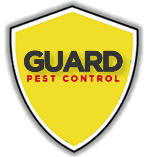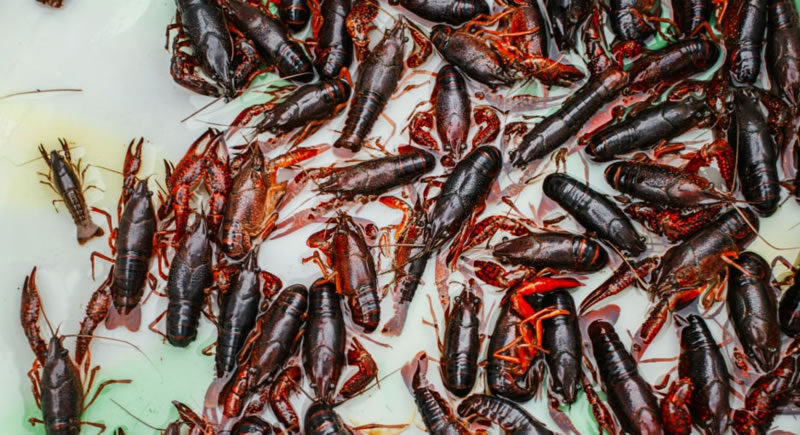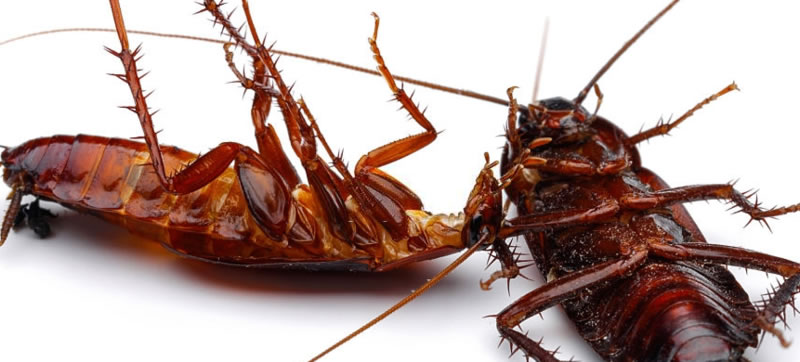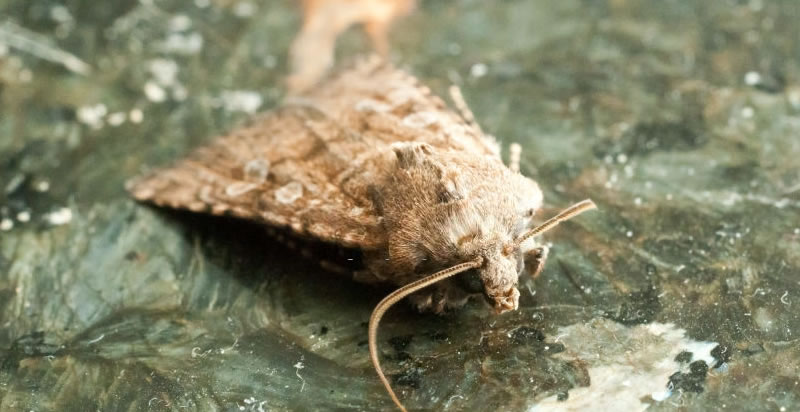Brief Information About Top 10 Pests in Australia
Australia, like any content, has its pest problems. Many insects and other pest species thrive in hot conditions, making Australia the perfect breeding ground. Termites have gained a reputation for the major risk they pose to homes and businesses. While termites are incredibly dangerous for our buildings, there are other creepy crawlies and small mammals that pose a significant health risk. Typhus is an infectious disease that is easily spread to humans via biting insects, just like Lyme disease. The scariest part? The critters that carry these contagions dwell in our homes. Who are the culprits to look out for? These are Top 10 Pests in Australia;
Ants
There are a number of different ants that are common household pests in Australia; bulldog ants, fire ants, and jack jumper ants (among others). You will know you have an ant problem if you regularly see little trails of them in and around your home or congregating together.
Ants are a household pest because they congregate on food (often leading to wastage as food gets thrown away). Certain species can also deliver a painful bite that will swell up. They pose a significant risk to your electronics too because they love warm, cosy boxed in areas and tend to congregate in computer boxes, electrical boards, inside TVs, and around wiring. Eventually, they manage to eat through the protective plastic coating and cause major damage to electrical wiring.
You can minimise the risk of ant infestations by removing the items that attract them – like food. Dirty dishes are an ant magnet, so is food that is not sealed in an airtight container, food spills on countertops, crumbs in the carpets – and the biggest one -pet feeding stations.
Cockroaches
Astoundingly, there are around 450 species of cockroaches in Australia, however, only three of them have made themselves a nuisance in Australian homes – the German cockroach, the American cockroach, and the Australian cockroach.
Cockroaches remain a health hazard for families and businesses. It is a myth that cockroaches are one of the cleanest insects, they are some of the most disease-ridden carriers. Cockroaches are capable of spreading salmonella and gastroenteritis. Their presence has also recently been linked to allergies in humans.
You can control cockroach populations by minimising their access to food and water sources. Ensure you seal dustbins, fix leaky taps and never leave water out, wipe countertops and clean away food spills. Also, prevent cockroaches from accessing your home.
Seal cracks and crevices, this is generally where they come in from. For proper extermination that will penetrate into their deep harbourages, you will need a professional to apply pest control measures.
Fleas
As more people welcome pets into their homes, flea numbers are rising. Fortunately, there’s no need to cut back on furry friends; instead, pet owners can take active control over flea populations. Fleas are external parasites, they live in the fur of pets, where they feed by biting and sucking blood.
Fleas will also bite humans and live among carpeting fibres, fabric linings, cushions, and between the cracks on hardwood flooring. You can reduce flea populations by;
- Vacuuming the home regularly
- Washing your pets
- Keeping dust off the floor
- Using chemical treatments to remove fleas
It is important to keep in mind that different temperatures will have a different effect on a flea’s life cycle – meaning – in hotter conditions, they mature faster and in cooler conditions, they mature slower. This is important when you treat to ensure you destroy the larvae too.
Ticks
Ticks are capable of spreading more diseases (including Typhus and Lyme disease) than any other insect or household pest. Yet, they are everywhere. Ticks are especially active in the hotter months, which is exactly the time your family and your pets are more likely to be active outdoors. There are two main categories of ticks; hard and soft. Both are troublesome and both can carry diseases.
Ticks can infest an area very quickly because the female lays thousands of eggs at a time. Once they hatch, the larvae require blood in order to grow. Ticks require a feed at every stage of their development or they simply don’t grow. They rarely use the same host twice, so it often takes many years for a tick to mature.
The best way to prevent a tick bite is by applying insect repellent that’s especially for ticks, before spending time outdoors. For pets, there are several treatments available. You can apply a topical product to eh pets fur which will poison the tick but it won’t stay o the fur for long.
There are also spot-on treatments that penetrate into the pet’s skin where it’s stored in the fat layer. As soon as the tick bites, it will die. This can minimise the spread of the diseases.
Bed Bugs
Recently, the world has seen a substantial rise in bed bug infestations, and Australia is no exception. It’s not fully understood why, but the theories go that increased global travel may play a part. Bed bugs are also immune to most types of insecticides, and, although they can’t fly, they’re extraordinarily fast-movers making escape almost effortless.
Bed bugs are nocturnal and they feed off of human blood. Their common name, bed bugs, came about because they tend to dwell in the warmth of human beds where they have a good supply of sleeping prey each night. Officially, they belong to the family Cimicidae.
They’re small reddish insects which, at their biggest, grow to an apple-seed size. You can identify them by their tendency to lurk in mattress seams, between blanket folds, and cosy little corners. If the infestation is quite severe, their harbourages are obvious by the small blood spots – which is caused by their excrement. You may also smell a sweet sticky odour – this is the pheromones they use to communicate. It’s also how they alert each other to danger so quickly, making it difficult to treat them effectively.
Moths
Moths are a common problem is Australian households, being a textile pest. Some of the moth species that are most problematic include the case-bearing clothes moth, the common or webbing clothes moth, the tapestry moth, and the brown house moth.
The webbing clothes moth can cause major damage to fabrics and upholstery, wool, linen and even curtaining. The tapestry moth resembles a beetle but causes wreckage with carpeting fur, and the feathers of stuffed animals.
You can try to repel moths with cedar scents. These pests are challenging to purge because you can’t simply tidy away their food sources. Some people make homemade moth traps using flypaper and fish oil. It is easier to exterminate moths with a professional pest control company.
Rodents (Rats and Mice)
There are well over 2200 different types of rodents, and Australia is home to 60 of those. A rodent’s teeth never stop growing and to manage this, they have to continually gnaw to keep their teeth from overextending – this is why they are such a problem. Rodents gnaw through important infrastructures like wooden beams, packaging, food supplies, and materials.
Not only do they cause havoc with their teeth, but their excrement can contaminate food supplies causing major wastage. Alongside this, rodents carry diseases which pose a very real health risk to families and individuals. They’re considered the second-fastest breeding mammal on earth after humans.
The best way to prevent a rodent infestation is:
- Remove clutter on the property which may serve as nesting grounds
- Practice exceptional hygiene
- Ensure food is always sealed away
- Allow natural predators, like owls, right of way on your premises
Treatment protocols for rodents include traps (mechanical or chemical) and the following chemical treatments;
- Metal phosphides
- Norbormide
- Flocoumafen
- Difenacoum
- Alpha-chloralose
- Broadifacoum
Many of these products are exceptionally dangerous. It is always better to hire a qualified pest controller who has the correct training and safety gear to complete the job safely.
Silverfish
Silverfish are prehistoric insects that predate the dinosaurs. They are small, silver-coloured and harmless to your health. That said, they can be devastating to your home – they feed on paper and fabric and always linger in places that are generally undisturbed. Silverfish are nocturnal, making sightings even scarcer. As a result, they are often in card boxes that are carried into the home.
If you find small holes in your clothing, that is a clear sign that you may have fishmoths lurking in your cupboards. Other telltale signs to look out for include:
- Yellow spots on clothing
- Damp spots in cupboard with tiny black spots that look like excrement
- Stains on cardboard boxes like cereal boxes
- Small skin sheddings
- You may actual silverfish in the bathroom near a water source or under toilet pipes and behind basins.
- It can be difficult to remove a silverfish’s food sources in order to reduce their population. Try to store paper in sealed containers. Also, try the following:
- Fix leaky taps to cut off their water supply
- Avoid leaving books out where they are easily accessible by the silverfish
- When you’re cleaning your home, vacuum in the cupboards paying close attention to the corners. This is where silverfish tend to lay their eggs.
Spiders
Australia is socially regarded as the spider capital by the rest of the world, wit over 2000 arachnid species calling this region home. While many humans battle arachniphobia, a fear of spiders, they are non-aggressive creatures.
They also play an important role in the environment. That said, they can be a pest in the home. Some of the most common spider species to be a nuisance in Australian households include:
- Redback spiders
- White-tailed spider
- Funnelweb spiders
- Mouse spiders
- Huntsman spiders
- Tarantulas
Spider bites can be exceptionally dangerous. While most spiders won’t bite from aggression, entrapment and fear will provoke an attack. Spiders use venom to help them hunt, and this venom can be deadly to humans. Australia is home to some of the most dangerous spiders in the world.
They’re attracted to human homes for the warmth, the shelter from the natural elements, and the light which lures insects (their prey). They generally hide in dark corners and enter the home via windows and cracks in walls and gaps in flooring.
You can deter them from entering your home by using peppermint oil, but this wears off fast. There are some effective treatments available that will control spider populations around the home, preventing infestations.
Termites (White Ants)
Termites are a major problem for any property owner. With their incredibly strong mandibles, they can tear down an entire home, so quietly, you wouldn’t have known they were there. Termites feed on rotting wood, wooden structures, crops harvested by people, and almost any other plant matter.
In their natural environment, they form an important part of the ecosystem. They are the cleanup crew, ensuring nothing goes to waste. However, in our homes, they can cause major damage. There are three main types of termites – dry wood, subterranean, and damp wood.
You can recognize dry wood termites by their colonies which are usually housed within a wooden structure. Dampwood termites are generally outdoors, nesting and feeding on damp, rotting wood that has contact with soil. Subterranean termites create little sand tunnels on wooden structures. Coptotermes, one of the most significant termite species is Australia’s “public enemy number 1”.











